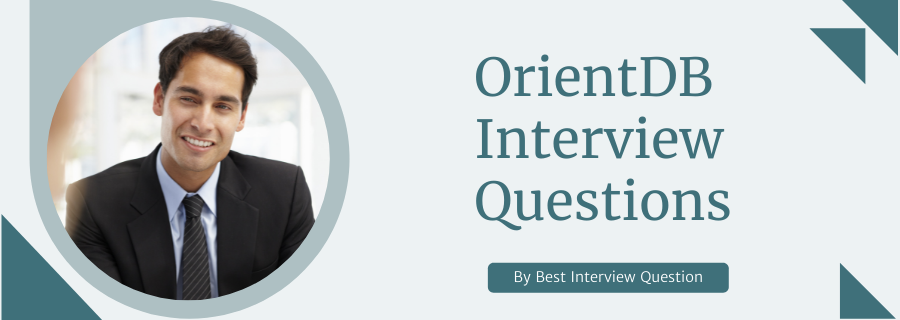
Most Frequently Asked OrientDB interview questions
Here in this article, we will be listing frequently asked OrientDB interview questions and Answers with the belief that they will be helpful for you to gain higher marks. Also, to let you know that this article has been written under the guidance of industry professionals and covered all the current competencies.
OrientDB is a database management system written in Java, and it is open source and uses NoSQL. It is used as a cross system database since it can be installed on Linux, Windows or Mac. OrientDB is used for Big Data applications as it provides a unified database for different types of data models.
The latest version of OrientDB is 3.0.12 which was released on 10th December 2018
- Download the in-built OrientDB binary set up file. This file gives different already compiled binary packages for the different OS.
- Extract and then install the OrientDB. In Linux, the file name will be orientDB-community-2.1.9.tar.gz, and In windows, the file will be orientdb-community-2.1.9.zip .
- Configure an OrientDB server as a service. Configuration procedure depends on the Operating System.
- Verify the Installation of OrientDB. Verification is done using three steps:-
Run the server.
Run the console.
Run the studio.
The verification procedure is different for different Operating Systems.
This is a fundamental OrientDB interview question
- Many database modules integrated into one db.
- Good user profile based security system.
- SQL engine developed from scratch to improve performance.
- Storage caching better for reducing latency.
- Remote connection with increased transaction isolation.
| S.no | MongoDB | OrientDB |
|---|---|---|
| 1. | MongoDB does not support ACID transactions, but MongoDB supports atomic operations. | OrientDB supports both ACID transactions and atomic operations. |
| 2. | MongoDB has its own language which is based on JSON | The query language is fundamentally built on SQL. |
| 3. | MongoDB uses B-Tree algorithm for all the indexes. | OrientDB helps three different indexing algorithms so that the user can achieve the best performance. |
- OrientDB is open source and can be installed on any system very quickly
- Provides 300% better speeds on write operation.
- Implements SQL engine from scratch.
- Backward compatible API for production users.
| S.no | OrientDB | Neo4j |
|---|---|---|
| 1. | OrientDB is the multi-model database management system | Neo4j is an open source graph database. |
| 2. | OrientDB is written in Java | Neo4j is written in Java and Scala |
| 3. | Replication Method:- Causal Clustering using the Raft protocol info | Replication Method:- master - master |
This is one of the most asked OrientDB interview questions.
There are several data types which OrientDB supports. The primary data types in OrientDB are:-
- Boolean
- Integer
- Long
- Float
- Double
- Date-time
- String
- Byte
- Date
- Decimal
Clusterin OrientDB is used to store the group of documents, records or vertices. By default, OrientDB creates only one cluster in each class and in that one cluster which has the same name as of the class stores all the record of the class. In a database up to 32,767(2^15-1) clusters can be created.
A CREATE command is used to create a cluster in a class with a specific name. By default, only one cluster can be formed in a class, but multiple clusters can also be produced by spawning the records in various places
OrientDB is a multi-master or master-less distributed architecture. OrientDB is used in different ways in different servers to get the scalability.
A graph model is a data model which is basically a network-like structure. A graph model stores the data in the form of Vertices (Nodes) which are interconnected with the help of Arcs (Edges). The original artifacts of this graph model are the edge and vertex.
Vertex – Vertex is an entity which can be connected with other Vertices and it has the following properties:
- It is a unique identifier
- It has a set of incoming Edges
- It has a set of outgoing Edges
Edge – Edge is an entity that connects the two Vertices, and it has the following properties:
- It is a unique identifier
- It links to an incoming Vertex (also known as head)
- It relates to an outgoing Vertex (also known as tail)
- It is a label that defines the type of connection/relationship between head and tail vertex.
Point to be noted: Go through this Q&A very thoroughly as this is one of the essential CouchDB interview questions.